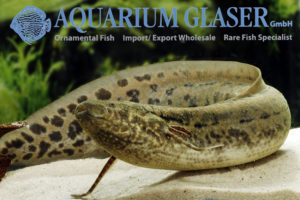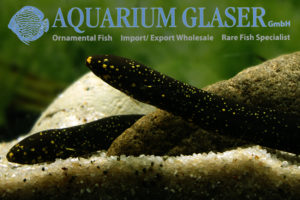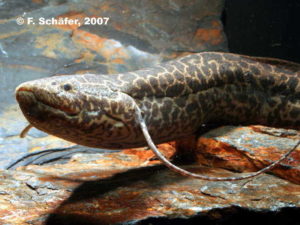There are four species of lungfish occuring in Africa. It is sometimes pretty difficult to distiguish them. In any case the Westafrican Lungfish (Protopterus annectens) is the most common one in the ornamental fish trade, although „most common“ has to be seen as very nuanced. These fish become almost a metre long and are very […]
29. Lungfishes (5)
-
-
Lepidosiren paradoxus
The South American Lungfish is a very interesting fish, but it has only very drab colours. The usual pattern is mudcolour, eg brownish, greyish, sometimes a bit blackish. But why should an animal that lives in swamps and feeds on snails show bright coloration? On the other hand: astonishingly enough, very young specimens, like the […]
-
Lepidosiren paradoxus
Only recently we introduced to you our lungfishes imported from the Congo (http://www.aquariumglaser.de/en/news/protocheirodon-pi/). Now we received the even rarer cousin: the South American Lungfish, Lepidosiren paradoxus, from Paraguay. There is only one species extant in South America, namely this living fossil. We usually import them as small young fish from Peru, the specimens we now […]
-
Lungfishes from the Congo
After quite a long time we were able again to import juvenile lungfishes from the Congo. Currently the animals are 12-20 cm long. Three species of lungfish are known to occur in the Congo: Protopterus aethiopicus, P. annctens, and P. dolloi. At least two of them, namely P. aethiopicus and P. dolloi are represented in […]
-
Protopterus aethiopicus congicus
Freshly arrived: Marbled lungfishes (Protopterus aethiopicus) rank among the genuine survival artists. For respiration they are dependent on atmospheric air, if one refuses them the admission to the surface, they can drown in the water (aquarium). The air breathing allows them, however, a nearly amphibious way of life. So they are able to withstand desiccation […]









